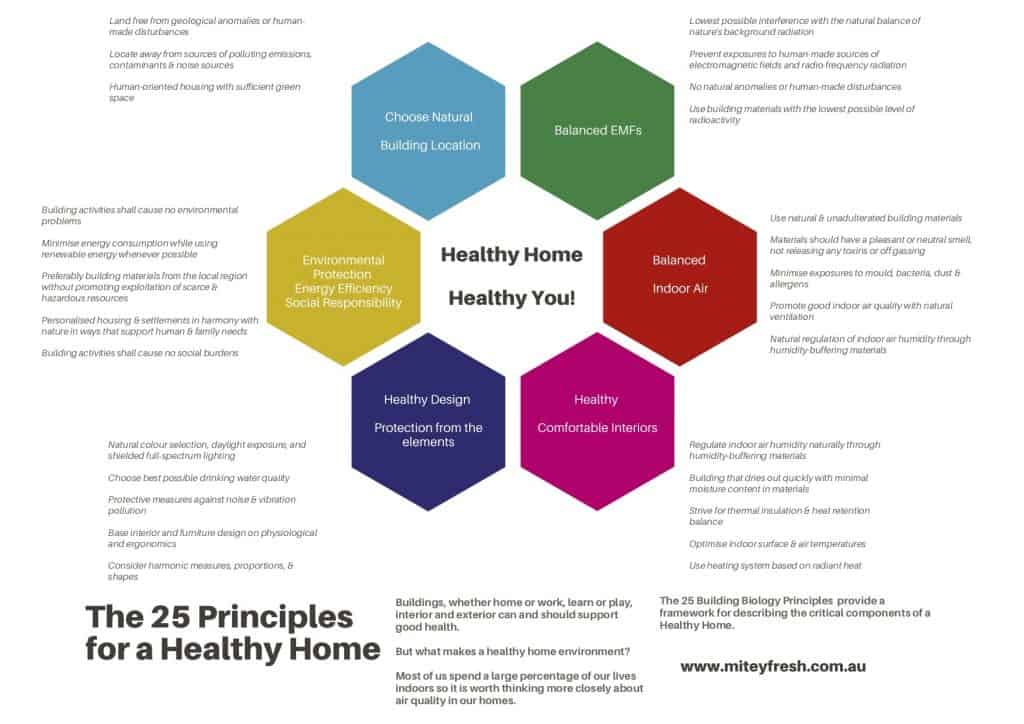Building Biology ~ What is it and how can it help me?

Building Biology is an interdisciplinary life science, integrating the holistic synergies and their interactions between all living things, their natural and built environments, and how it connects the study between buildings and the environment they are built in, and their impact upon the health and well-being of those who occupy them.
Reducing exposure to contaminants should be part of any healthy living.
Interactions between air, moisture and toxins, using evidence based information and testing, Indoor Environmental Assessment provides you with the understanding on how to improve, create and manage healthier indoor spaces, heal and support healthy occupants, and support our planet’s ecology on a global scale. You will learn about the
- Indoor air pollution is one of the top 5 environmental risks to public health.1
- People spend 90% or more of their time indoors.2
- Concentrations of many pollutants indoors far exceed those found outdoors.3
- Numerous new chemicals are registered for use in consumer products per day.4
- Many technology advances have yet to be tested for their effect on human health.5
- Occupants can improve the air quality in their buildings, often with relatively simple measures, which should provide health benefit.6
- Reducing exposure to contaminants should be part of any healthy living!7
1,2,3,4,6 USA EPA (2015), 5 WHO (2011), 7 Mitey Fresh (1996)

Being unwell is annoying and costly
The Indoor Environmental Assessment analyses and assess the adverse health hazards in your home, work space and building in order to identify the root cause to help you understand what’s going on.
What's included in my Indoor Environmental Assessment
Environmental exposure assessment covers:
- analysis of health issues of every occupant
- your entire building inside, outside
- the history of the building, the site
- building materials, design
- water damage, mould, mycotoxins
- environmental pollutants, vehicular, allergens, dust, dust mites, pet hair & more
- gasses, pollutants
- moisture, ventilation, heating, cooling pathways
- bedding, furnishing materials, clothing, toys
- chemicals, pesticides, cleaning and personal care products
- electrical appliances, telecommunication devices
- drinking water
- food packaging, kitchenware
- and much more!







